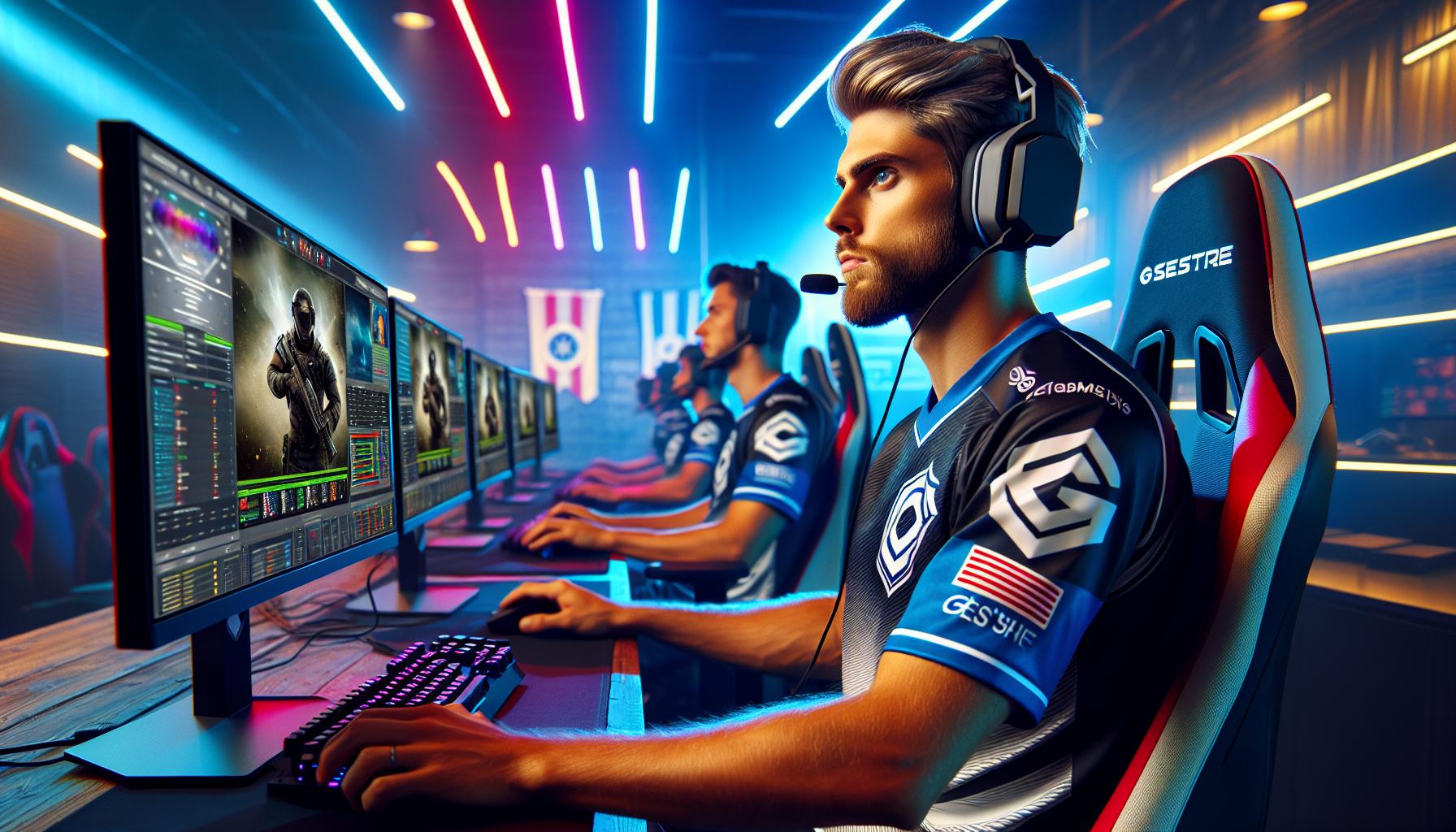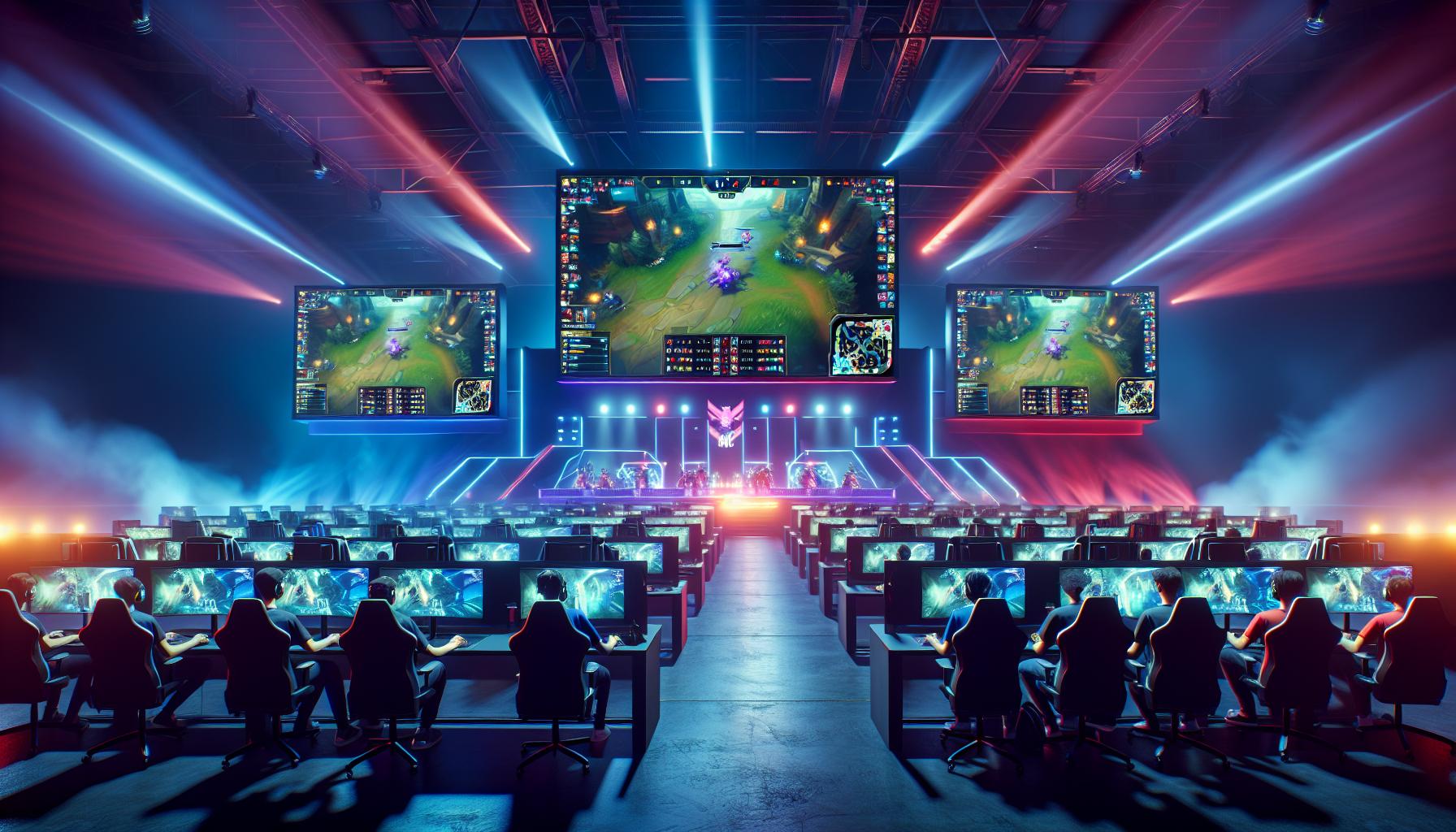The Best Fluffy Pancakes recipe you will fall in love with. Full of tips and tricks to help you make the best pancakes.

Valorant Stats Guide: Top Pro Players and Teams Dominating VCT 2023
As an avid Valorant enthusiast and esports analyst, I’ve seen firsthand how statistics have revolutionized competitive gaming. Valorant’s esports scene has exploded since its launch, with millions of viewers tuning in to watch professional matches and tournaments worldwide.
I’ve discovered that understanding Valorant stats isn’t just about tracking kills and deaths – it’s about diving deep into crucial metrics like economy rating, first blood percentage, and clutch success rates. These numbers tell compelling stories about player performance and team strategies that have become essential for teams, analysts, and fans alike. Whether you’re a casual viewer or a dedicated follower of the VCT circuit, grasping these statistics will transform how you experience professional Valorant matches.
Key Takeaways
- Valorant’s esports structure consists of three main tiers: Challengers (regional), Masters (international), and Champions (world championship), with prize pools ranging from $100K to $1M
- Key performance metrics in professional Valorant include KDA ratio (top players maintain >1.3), Average Combat Score (pros average 200-250), and First Blood Rate (elite entry fraggers maintain >65%)
- Leading organizations like Paper Rex, LOUD, and Fnatic dominate their respective regions with win rates above 75% and substantial tournament earnings in 2023
- Popular statistical analysis platforms such as VLR.gg, Tracker.gg, and Blitz.gg provide real-time match data, player statistics, and comprehensive performance analytics
- Agent selection significantly impacts win rates, with Jett, Sova, and Omen maintaining the highest pick rates (>75%) in professional play
Understanding Valorant’s Competitive Esports Scene
Valorant’s professional esports ecosystem centers around Riot Games’ structured competitive framework, establishing a clear path from amateur competitions to international championships. I’ve analyzed the comprehensive tournament system that shapes the competitive landscape of Valorant esports.
Professional Tournament Structure
The Valorant Champions Tour (VCT) operates on a three-tiered system:
- Challengers: Regional tournaments for emerging teams to qualify for international events
- Masters: International mid-season tournaments featuring top teams from each region
- Champions: The premier annual world championship with a $1M prize pool
Tournament Format Statistics:
| Tournament Tier | Teams | Prize Pool | Duration |
|---|---|---|---|
| Challengers | 12 | $100K | 6 weeks |
| Masters | 16 | $650K | 2 weeks |
| Champions | 16 | $1M | 2-3 weeks |
Regional Leagues and Championships
The regional competitive structure divides into three major territories:
- Americas League: Combines North America South America Brazil
- EMEA League: Encompasses Europe Middle East Africa
- Pacific League: Includes East Asia South Asia Oceania
Regional Performance Metrics:
| Region | Teams | Match Days | Average Viewership |
|---|---|---|---|
| Americas | 10 | 8 weeks | 250K |
| EMEA | 10 | 8 weeks | 200K |
| Pacific | 10 | 8 weeks | 150K |
- Regular season matches in a round-robin format
- Double-elimination playoffs
- Direct qualification paths to international events
- Game-day broadcasts with statistical analysis segments
Key Performance Metrics in Professional Valorant

Professional Valorant matches generate multiple data points that reveal player impact during competitive matches. These metrics provide quantifiable insights into individual performance across different aspects of gameplay.
Kill/Death/Assist (KDA) Ratio
KDA ratio calculates a player’s effectiveness by combining their kills assists divided by deaths. Top professional players maintain KDA ratios above 1.3 across tournament matches, with elite duelists reaching 1.5 or higher. The metric accounts for trade kills team-based eliminations to present a comprehensive view of combat efficiency.
| Role | Average KDA | Top Performer KDA |
|---|---|---|
| Duelist | 1.2-1.4 | 1.5+ |
| Initiator | 1.1-1.3 | 1.4+ |
| Sentinel | 1.0-1.2 | 1.3+ |
| Controller | 1.0-1.2 | 1.3+ |
Average Combat Score (ACS)
ACS measures overall combat performance through damage dealt kills assists utility usage. The metric assigns point values to different actions: 100 points per kill 50 points for assists 1 point per damage point. Professional players average 200-250 ACS with star performers consistently achieving scores above 280 during tournament matches.
| Action | ACS Points |
|---|---|
| Kill | 100 |
| Assist | 50 |
| Damage | 1 per point |
| Multi-kill bonus | 50 per additional kill |
First Blood Rate
First Blood Rate tracks a player’s success in securing the opening kill of each round. Elite entry fraggers maintain First Blood Rates above 65% in professional matches. This metric indicates aggressive playmaking ability map control effectiveness, particularly crucial for duelist initiator roles.
| Position | Average FB Rate |
|---|---|
| Entry Fragger | 60-70% |
| Secondary Entry | 45-55% |
| Support | 30-40% |
Top Players and Teams by the Numbers

Statistical analysis reveals the dominant forces in professional Valorant competition, highlighting exceptional performance metrics across organizations and individual players.
Most Successful Organizations
Paper Rex leads the Pacific region with an 85% win rate in regional matches and $450,000 in tournament earnings for 2023. The current competitive landscape shows clear regional powerhouses:
| Organization | Region | 2023 Earnings | Win Rate |
|---|---|---|---|
| LOUD | Americas | $750,000 | 78% |
| Fnatic | EMEA | $680,000 | 82% |
| Paper Rex | Pacific | $450,000 | 85% |
| Evil Geniuses | Americas | $425,000 | 76% |
| DRX | Pacific | $380,000 | 74% |
Individual Player Statistics
Professional Valorant’s top performers demonstrate exceptional skill across key metrics:
| Player | Team | ACS | K/D | FB% |
|---|---|---|---|---|
| TenZ | Sentinels | 285 | 1.45 | 68% |
| Derke | Fnatic | 276 | 1.38 | 71% |
| yay | Cloud9 | 272 | 1.42 | 65% |
| nAts | Team Liquid | 268 | 1.35 | 62% |
| Jinggg | Paper Rex | 265 | 1.33 | 67% |
- 5 players maintain an Average Combat Score (ACS) above 250
- 3 players achieved a First Blood success rate exceeding 65%
- 8 players recorded more than 1,000 kills in official matches
- 4 players demonstrated clutch win rates above 40%
Statistical Analysis Tools and Platforms

Statistical analysis in Valorant esports relies on specialized tools that track performance metrics across professional matches. These platforms provide comprehensive data visualization enabling teams analysts fans to analyze competitive gameplay.
Third-Party Stats Tracking
Popular third-party platforms offer detailed statistical analysis for Valorant esports:
- VLR.gg: Tracks match history player statistics tournament results with real-time updates during professional matches
- Tracker.gg: Provides comprehensive player profiles including agent performance metrics win rates across competitive tiers
- Thespike.gg: Features tournament statistics team rankings head-to-head matchup data from professional events
- Blitz.gg: Offers match analytics heat maps ability usage patterns focusing on professional gameplay analysis
| Platform | Key Features | Update Frequency |
|---|---|---|
| VLR.gg | Match Stats, Player Profiles | Real-time |
| Tracker.gg | Agent Performance, Win Rates | Daily |
| Thespike.gg | Tournament Data, Rankings | Post-match |
| Blitz.gg | Heat Maps, Ability Analysis | Real-time |
- VCT Stats: Official tournament statistics including player performance team standings prize distribution
- Global Power Rankings: Monthly updated rankings based on team performance across official tournaments
- Match History API: Developer access to match data enabling creation of custom analytical tools
- Competitive Leaderboards: Regional rankings displaying top performers in professional circuits
| Official Resource | Data Points | Access Level |
|---|---|---|
| VCT Stats | Performance Metrics | Public |
| Power Rankings | Team Rankings | Public |
| Match History API | Raw Match Data | Developer |
| Leaderboards | Regional Rankings | Public |
Impact of Agent Selection on Win Rates
Agent selection significantly influences team performance in professional Valorant matches, with specific agents maintaining consistently high pick rates across different maps and tournaments. Statistical analysis reveals clear patterns in agent effectiveness and team composition strategies at the highest level of competition.
Most Picked Agents in Pro Play
The top agents in professional Valorant demonstrate distinct pick rates across competitive matches:
| Agent | Pick Rate | Win Rate | Average Rounds Won |
|---|---|---|---|
| Jett | 85% | 54.2% | 13.1 |
| Sova | 82% | 53.8% | 12.9 |
| Omen | 78% | 52.7% | 12.7 |
| KAY/O | 75% | 51.9% | 12.5 |
| Killjoy | 72% | 53.1% | 12.8 |
These agents maintain their popularity due to:
- Consistent utility impact across different map layouts
- Strong synergy potential with multiple team compositions
- Versatile ability sets for both attack and defense
- High impact ultimate abilities in crucial round situations
Agent Composition Statistics
Team compositions in professional play follow specific patterns:
| Composition Type | Usage Rate | Average Round Differential |
|---|---|---|
| Double Duelist | 45% | +2.1 |
| Single Duelist | 35% | +1.8 |
| Triple Controller | 12% | +1.5 |
| Double Sentinel | 8% | +1.2 |
- Double initiator setups on larger maps like Ascent Pearl
- Single duelist compositions on defense-sided maps
- Controller-heavy lineups on maps with multiple chokepoints
- Sentinel stacking strategies on specific bomb sites
Conclusion
As I’ve explored the world of Valorant stats and esports metrics it’s clear that data analytics has become an integral part of competitive gaming. These statistics aren’t just numbers – they’re powerful tools that shape team strategies player development and viewer engagement.
I believe the future of Valorant esports will continue to be driven by sophisticated statistical analysis. From individual player performances to team compositions the depth of available data helps everyone better understand and appreciate the competitive scene.
The ongoing evolution of statistical tracking tools and platforms will undoubtedly enhance our understanding of professional Valorant even further. For players teams and fans alike these insights will remain invaluable in the ever-growing world of Valorant esports.
